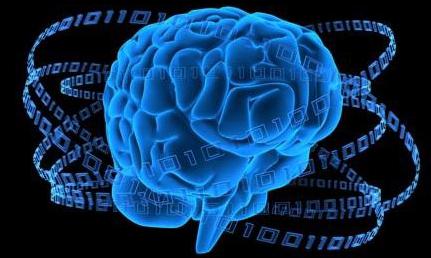Tác Giả: Amjaad Majeed Hameed, Nasma Naji AL-Hijia
Trừu tượng
Động kinh là biểu hiện thần kinh phổ biến nhất trong thời kỳ sơ sinh. Và thông thường nó cho thấy một vấn đề tiềm ẩn trong não. Do tổn thương não và khiếm khuyết phát triển trong hệ thống thần kinh trung ương. Vì chụp CT (chụp cắt lớp điện toán) đáng tin cậy hơn. Nhạy hơn và cụ thể hơn trong việc xác định tổn thương não tiềm ẩn. Gây co giật như thiếu máu cục bộ, xuất huyết và rối loạn cấu trúc não. Do đó nó trở thành một công cụ quan trọng trong đánh giá co giật ở trẻ sơ sinh.
Mục đích nghiên cứu:
Để tìm thấy sự bất thường trong CT scan là nguyên nhân có thể gây co giật ở trẻ sơ sinh. Bệnh nhân và phương pháp: Một nghiên cứu mô tả, được thực hiện cho 70 trẻ sơ sinh được chụp CT đầu từ giai đoạn đầu tháng 1 năm 2008 đến đầu tháng 4 năm 2010 tại bệnh viện giảng dạy AL-Diawanyia ở Iraq sau khi có thông tin lịch sử tốt, khám lâm sàng và điều tra paraclincal.
Tất cả các thông tin được thu thập trong danh sách kiểm tra, bao gồm cả thời gian xảy ra động kinh & nguyên nhân cơ bản. CT scan (Siemens) được sử dụng là với nhiều phần dọc trục. Sau khi gây mê toàn thân cho trẻ sơ sinh.
Kết quả:
Từ 70 trẻ sơ sinh bị co giật sơ sinh 28 là nữ và 42 (60%) là nam. 39 trẻ sơ sinh có CT scan bình thường và 31 có CT scan bất thường như rối loạn chức năng não. Xuất huyết nội sọ, thiếu máu não và não.
Tỷ lệ cao của CT scan bất thường (87,5%) trong cơn động kinh xảy ra trong 72 giờ đầu tiên. Trong số những người chụp CT dương tính thiếu máu cục bộ thiếu oxy đã được tìm thấy ở (45,9%).
Giới thiệu
Eizure là biểu hiện thần kinh phổ biến nhất trong thời kỳ sơ sinh (28 ngày đầu tiên của cuộc đời). Nó có thể được định nghĩa là sự thay thế paroxysmal trong chức năng thần kinh.
Ví dụ: Hành vi, vận động hoặc chức năng tự trị và thông thường nó cho thấy một vấn đề tiềm ẩn trong não do tổn thương não và khiếm khuyết phát triển trong hệ thống thần kinh trung ương [1-5]. Trong số các dấu hiệu thần kinh bất thường, co giật ở trẻ sơ sinh có tiên lượng đặc biệt kém [6-8].
Khởi phát sớm các cơn động kinh
Là một yếu tố dự báo mạnh mẽ về tỷ lệ mắc bệnh và tử vong sau này ở trẻ sơ sinh. Trẻ sơ sinh có nguy cơ đặc biệt cho sự phát triển của cơn động kinh. Bởi vì bệnh chuyển hóa, độc hại, cấu trúc và nhiễm trùng. Biểu hiện nhiều hơn trong thời gian này, hơn bất kỳ giai đoạn nào khác của cuộc sống. Đôi khi co giật ở trẻ sơ sinh gây ra bởi các rối loạn có thể điều trị. Nếu không được chẩn đoán, có thể gây tổn thương não vĩnh viễn.
Co giật sơ sinh không giống với ở trẻ em và người lớn vì co giật tonic-clonic tổng quát có xu hướng không xảy ra trong tháng đầu tiên của cuộc đời [9.10]. Các nguyên nhân phổ biến nhất của co giật ở trẻ sơ sinh trong 1-3 ngày đầu tiên của cuộc đời. Là bệnh não do thiếu máu cục bộ thiếu oxy. Xuất huyết trong tĩnh mạch, hạ canxi máu, hạ đường huyết và lỗi chuyển hóa bẩm sinh.
Trong khi ở trẻ sơ sinh có nhóm tuổi 4-14 ngày
Nguyên nhân phổ biến của động kinh là nhiễm trùng, rối loạn chuyển hóa và kernicterus. Ở trẻ sơ sinh từ 2 đến 8 tuần, các nguyên nhân gây co giật có xu hướng bị nhiễm trùng, chấn thương đầu và dị tật của sự phát triển vỏ não [10].
Các công việc trong quản lý động kinh ở trẻ sơ sinh nên bao gồm tiền sử chăm sóc trước khi sinh và khi sinh. Cũng như kiểm tra thể chất và nghiên cứu trong phòng thí nghiệm. Bao gồm glucose máu, bilirubin máu, điện giải đồ, canxi, phốt phát và magiê là bước tiếp theo. Là bất kỳ nghi ngờ nào về nhiễm trùng, nên thực hiện một cú đánh cột sống để loại trừ viêm màng não đã được quan sát ở tần số cao ở trẻ sơ sinh bị động kinh [5,11].
Các nghiên cứu bổ sung, bao gồm:
Nồng độ trong máu đối với amoniac, lactate, pyrovate và nước tiểu. Để phân tích hữu cơ và aminoacid cho lỗi chuyển hóa bẩm sinh có thể xảy ra. EEGpolygraphy nối tiếp có thể ghi nhận cơn động kinh kéo dài [12, 13]. Trong số các nghiên cứu X quang, chụp cộng hưởng từ và chụp CT thường được sử dụng để sàng lọc các tổn thương nội sọ ở trẻ sơ sinh và cả hai đều có lợi thế đáng kể so với siêu âm để chẩn đoán nguyên nhân gây co giật [14].
Vì CT scan đáng tin cậy hơn, nhạy cảm hơn và cụ thể hơn. Thậm chí còn tốt hơn cả Hoa Kỳ trong việc xác định tổn thương não tiềm ẩn gây co giật. Như thiếu máu cục bộ, xuất huyết và rối loạn cấu trúc não. Do đó nó trở thành một công cụ quan trọng trong Đánh giá co giật sơ sinh [15-18 ].
MRI dường như nhạy cảm hơn so với CT scan để phát hiện các tổn thương não tinh tế và nó đóng một vai trò quan trọng trong việc xử lý bệnh lý não, nó có lợi thế hơn so với CT scan (không phơi nhiễm với bức xạ ion hóa & đánh giá hình thái não tốt hơn).
Các thế hệ MRI mới (bao gồm hình ảnh có trọng lượng khuếch tán & hình ảnh có trọng lượng tưới máu) đã giúp thực hiện phân tích động và chức năng của tuần hoàn não) & điều này dẫn đến tăng tính hữu ích của nó trong chẩn đoán thay đổi thiếu máu não cấp tính. Nhược điểm chính của MRI là không thích hợp với máy quét MR, chi phí cao, thời gian kiểm tra dài và giải thích khó khăn [19-24].
Nguyên liệu và phương pháp
Một nghiên cứu mô tả, được thực hiện trong 70 trẻ sơ sinh được gọi. Là CT scan của đứng đầu từ thời kỳ đầu tiên của Tháng 1 năm 2008 đến đầu tháng tư năm 2010. Những trẻ sơ sinh được giới thiệu cho CT quét. Chăm sóc đặc biệt cho trẻ sơ sinh đơn vị hoặc từ phòng khám ngoại trú nhi. Trong giáo dục bà mẹ và trẻ em bệnh viện ở AL-Diawanyia ở Iraq sau thông tin lịch sử tốt.
Lâm sàng kiểm tra và điều tra. Tất cả thông tin được thu thập trong danh sách kiểm tra, bao gồm. Nhân khẩu học sơ sinh (tuổi, giới tính, chỉ số trưởng thành,…).
Các bệnh nhân trong nghiên cứu
Là trẻ sơ sinh bị co giật được chẩn đoán bởi một bác sĩ nhi khoa. Trong hai mươi tám ngày đầu đời và CT scan sọ được thực hiện cho họ. Trẻ sơ sinh loại trừ khỏi nghiên cứu này. Nếu có co giật nhưng CT scan không làm. Vì gia đình không chịu làm CT scan hoặc khi có chống chỉ định gây mê.
CT scan (Siemens. Emoding 4, VA47C) với nhiều phần trục, lát độ dày 3 mm, (kv 130. Ms 30) không có tương phản. Sau khi gây mê toàn thân trẻ sơ sinh sử dụng liều tối thiểu hít phải fluthane. Bởi Penlon máy gây mê với khoảng 1 MAC (nồng độ phế nang tối thiểu). Phân tích thống kê được sử dụng trong nghiên cứu này bao gồm tần suất. Tỷ lệ phần trăm, tỷ lệ mắc CT não bất thường trong ba đầu ngày của cuộc sống. Tỷ lệ thiếu máu cục bộ bệnh não thiếu oxy ở trẻ sơ sinh với kết quả chụp CT dương tính.
Kết quả
Tổng số bệnh nhân tham gia vào nghiên cứu này là 70. Trong đó 42 người là nam (60%) và 28 nữ (40%). Hiển thị trong hình 1. Chế độ sinh ở 45 trẻ sơ sinh là sinh thường ở âm đạo (64,3%) và trong 25 trẻ sơ sinh được mổ lấy thai (35,7%). Phần lớn trẻ sơ sinh là học kỳ 53 (75,7%) và chỉ có 17 trẻ sinh non (24,3%). Ba mươi chín trẻ sơ sinh có CT scan bình thường và 31 có CT scan bất thường (Bảng – 1). Bất thường của CT là rối loạn chức năng não, xuất huyết nội sọ, thiếu máu não và viêm não.
Phần lớn
Các cơn động kinh ở trẻ sơ sinh có kết quả CT dương tính. Xảy ra trong ba ngày đầu tiên của cuộc đời 21 (30,2%). Sau đó là 6 (8,8%) và 4 (5,2%) trong 4 đến 14 ngày và 2-4 tuần tiếp theo. Xuất huyết nội sọ xảy ra ở 5 bệnh nhân. Ttất cả họ đều bị co giật trong ba ngày đầu tiên của cuộc đời.
Bệnh não thiếu máu cục bộ thiếu oxy được tìm thấy trong 15neonate. Mười một trong số họ bị co giật trong ba ngày đầu tiên. Chỉ có một trẻ sơ sinh có não nội sọ. Nữ 40% Nam 60% xuất huyết nội sọ được tìm thấy ở 5 bệnh nhân và 4. Trong số đó là trẻ sơ sinh non tháng Bệnh não. Do thiếu máu cục bộ được tìm thấy ở 15 bệnh nhân và chỉ có 3 trong số đó là trẻ sinh non.
Ba trong số năm bệnh nhân bị xuất huyết nội sọ có âm đạo bình thường. Và 11 người trong số 15 bệnh nhân mắc bệnh não. Do thiếu máu cục bộ thiếu oxy đã sinh thường ở âm đạo. Từ bảng -2- chúng tôi thấy tỷ lệ chụp CT bất thường cao (87,5%). Trong cơn động kinh xảy ra trong 72 giờ đầu tiên. Trong số những phát hiện CT bất thường cho thấy tỷ lệ mắc bệnh não. Do thiếu máu cục bộ cao (48,34%).
Tần suất
Các bất thường cấu trúc não (rối loạn phát triển não). Quan sát thấy ở 10 trẻ sơ sinh (32,3%) như trong Bảng -3. Magna bể chứa lớn được quan sát thấy ở 3 trẻ sơ sinh. Tâm thần phân liệt ở một bệnh nhân. Tràn dịch màng phổi ở 2 trẻ sơ sinh, viêm màng phổi lớn ở một trẻ sơ sinh sơ sinh. Porencephaly ở 2 bệnh nhân và dị tật động mạch ở 1 trẻ sơ sinh.
Hình -2. Cho thấy nguyên nhân của cơn động kinh ở trẻ sơ sinh với kernicterus CT scan bình thường được. Tìm thấy ở 8 trẻ sơ sinh (20,5%), rối loạn chuyển hóa ở 6 bệnh nhân (15,4%), (bốn bệnh nhân bị hạ đường huyết và hai bệnh nhân khác bị hạ canxi máu). Viêm màng não 10 trẻ sơ sinh (25,7%) và không rõ nguyên nhân ở 15 trẻ sơ sinh (38,5%).
Thảo luận
Động kinh là dấu hiệu rối loạn chức năng thần kinh thường gặp nhất ở trẻ sơ sinh, hầu hết các cơn động kinh ở trẻ sơ sinh xảy ra trong khoảng từ 12 đến 48 giờ trong cuộc đời và nó không chỉ thường xuyên hơn trong thời kỳ sơ sinh mà còn rất khó chẩn đoán vì bản chất tinh tế [25,26].
Nguyên nhân phổ biến nhất của co giật ở trẻ sơ sinh là bệnh não do thiếu oxy (60%), nhiều rối loạn bổ sung có khả năng gây co giật bao gồm xuất huyết nội sọ (15%), rối loạn chuyển hóa, nhiễm trùng, chấn thương, cấu trúc và rối loạn của mẹ [14,10].
Trong nghiên cứu này, có một ưu thế nam giới tổng thể (60%)
Phù hợp và hỗ trợ với các nghiên cứu khác Moayedi et al [27], Taghdiri et al [28] và Sanjeev et al [29] cũng báo cáo về khả năng đáp ứng giới tính nam trong các nghiên cứu của họ. Trong đó không có cơ chế hợp lý nào được đề xuất, Moayedi et al [27]) đã báo cáo một mối quan hệ đáng kể giữa sự xuất hiện của cơn động kinh và tình dục (p 0,05), Taghdiri et al [28].
Tìm thấy (65%) trẻ sơ sinh là nam, trong khi Sanjeev et al [29] được tìm thấy (70,5%) là nam và Sanjeev et al tin rằng các bé trai được cha mẹ chăm sóc tốt hơn và được đưa đến bệnh viện ngay cả khi có những phàn nàn nhỏ nhưng các bé gái thường bị bỏ rơi và được quản lý tại nhà ngay cả khi chúng bệnh nặng.
Đây có thể là một yếu tố gây ra ưu thế giới tính nam. Phần lớn trẻ sơ sinh là hạn (75,7%) và phần lớn trong số chúng là sản phẩm của âm đạo bình thường (64,3%) cũng đi cùng với phát hiện của Sanjeev et al và Moayedi et al, Sanjeev et al đã báo cáo (82,3%) các trường hợp là hạn và Moayedi et al báo cáo (65,6%) các trường hợp là sản phẩm của sinh thường âm đạo và (73,6%) là trẻ sơ sinh. [28,29].
Trong nghiên cứu này
Chúng tôi có thể giải thích phát. Hiện này bởi hầu hết các nguyên nhân phổ biến gây co giật ở trẻ sơ sinh là các biến chứng sau sinh. Ba mươi chín trẻ sơ sinh (55,8%) đã chụp CT đầu bình thường và ba mươi mốt (44,2%). Trẻ sơ sinh khác có kết quả chụp CT dương tính. Điều này trái ngược với phát hiện của Taghdiri et al [28], người phát hiện ra rằng 35% trẻ sơ sinh có Phát hiện CT bình thường và 65% có kết quả bất thường.
Kết quả của chúng tôi có thể được giải thích rằng phần lớn các biến chứng sau sinh là nguyên nhân gây động kinh phổ biến nhất trong nghiên cứu của chúng tôi không cho thấy sự thay đổi cấu trúc não cho đến khi nó có biến chứng nhất định hoặc nó đã trở thành giai đoạn muộn [30, 31].
Chúng tôi thấy rằng
Phần lớn trẻ sơ sinh có kết quả CT dương tính đã bị động kinh xảy ra trong ba ngày đầu tiên của cuộc đời, điều này cũng xảy ra với phát hiện của Taghdiri và cộng sự [28], người báo cáo rằng có tỷ lệ chụp CT bất thường cao (65% ).
Trong các cơn động kinh xảy ra trong 72 giờ đầu tiên, cũng phát hiện này với Sanjeef và cộng sự [29], người đã tìm thấy tỷ lệ cao của chụp CT bất thường (67,6%) ở trẻ sơ sinh bị co giật trong 72 giờ đầu đời và đi kèm với phát hiện Erikson et al [32] đã báo cáo rằng tỷ lệ phát hiện CT dương tính cao nhất xảy ra trong những ngày đầu tiên và thứ 2 của cuộc đời.
Trong nghiên cứu của chúng tôi
Có thể giải thích điều này bằng cách co giật sớm có thể là do sinh non, ngạt và lao động khó khăn cho kết quả CT dương tính [30] giải thích này phù hợp với Maharban S [33], người phát hiện ra rằng bệnh asphaxia và xuất huyết nội sọ là cùng nhau chiếm khoảng một nửa các cơn động kinh khởi phát sớm sau đó là các nguyên nhân khác.
Ngoài ra, lời giải thích này cũng được đưa ra với Tekgul et al [34], người đã báo cáo rằng tình trạng thiếu oxy não và chuyển dạ khó khăn là nguyên nhân phổ biến nhất gây co giật sơ sinh sớm. Trong số những trẻ sơ sinh được chụp CT bất thường, bệnh não do thiếu máu cục bộ thiếu oxy được thấy trong (45,9%), đi cùng với nghiên cứu của Renon et al (40%) [35] & Arpino et al [36].
Kết luận
Tỷ lệ cao phát hiện CT scan não bất thường (87,5%). Trong cơn động kinh sơ sinh xảy ra trong 72 giờ đầu sau sinh. Tỷ lệ mắc bệnh não do thiếu máu. Cục bộ cao trong co giật sơ sinh trong ba ngày đầu đời (45,9%). Xảy ra ở trẻ non tháng kéo dài, lao động khó khăn.
>>>Thao khảo thêm ở bản gốc: Động kinh ở trẻ em




